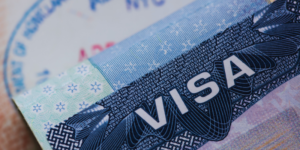Virtual immigration fairs have emerged as a groundbreaking tool in the realm of global mobility. By bridging geographical barriers, these digital events provide prospective immigrants with direct access to employers, educational institutions, and immigration experts from the comfort of their homes. The impact of virtual immigration fairs on international migration trends is undeniable, influencing how people navigate their migration journeys in an increasingly connected world.
This blog delves into the transformative effects of virtual immigration fairs, their advantages, and how they shape migration patterns globally.
What Are Virtual Immigration Fairs?
Virtual immigration fairs are online events designed to connect prospective immigrants with resources and opportunities to support their migration goals. These fairs replicate the structure of traditional in-person events but leverage digital platforms to enable global participation.
Participants can:
- Interact with representatives from governments, employers, and academic institutions.
- Attend webinars and panel discussions.
- Access resources such as visa application guides and career opportunities.
Key Features of Virtual Immigration Fairs
Virtual immigration fairs are characterized by:
- Interactive Platforms: Enable live chats, video calls, and virtual booths.
- Global Reach: Open to participants from any location with internet access.
- Diverse Offerings: Cover topics like visa options, immigration policies, and skill development.
- Flexibility: Allow attendees to engage at their convenience.
- Data-Driven Insights: Use analytics to understand participant interests and preferences.
The Role of Virtual Fairs in International Migration
Virtual immigration fairs have redefined how people explore migration opportunities. Their role in international migration includes:
1. Connecting Talent with Global Opportunities
- Facilitate interactions between skilled professionals and employers in high-demand sectors.
- Highlight migration pathways aligned with labor market needs.
2. Enhancing Accessibility
- Reduce barriers such as travel costs and time constraints.
- Provide opportunities for individuals from underserved regions.
3. Simplifying Immigration Processes
- Offer direct guidance on visa applications, documentation, and eligibility criteria.
- Present real-time updates on immigration policies.
Advantages of Virtual Immigration Fairs
1. Cost-Effective Participation
Virtual fairs eliminate the need for travel, making them an affordable option for both participants and organizers.
2. Wider Reach and Inclusivity
Participants from remote or less-connected regions can access the same resources as those in urban centers.
3. Real-Time Interaction
Live Q&A sessions, webinars, and chat options allow for immediate feedback and personalized advice.
4. Sustainability
Digital events reduce the environmental footprint associated with in-person fairs.
Impact on Migration Trends
1. Shifting Migration Patterns
The accessibility of virtual fairs has diversified migration flows, encouraging movement to less traditional destinations.
2. Increased Skill Alignment
Virtual events help bridge skill gaps by matching professionals with countries experiencing labor shortages.
3. Streamlined Decision-Making
Prospective migrants can make informed choices about destinations, industries, and educational institutions.
4. Focus on Skilled Migration
Governments and employers increasingly use virtual fairs to target skilled professionals in high-demand sectors.
Challenges of Virtual Immigration Fairs
Despite their advantages, virtual immigration fairs face challenges:
- Digital Divide: Limited internet access in some regions restricts participation.
- Impersonal Interactions: Lack of face-to-face connections can make engagement feel less authentic.
- Technical Issues: Platform glitches or connectivity problems can disrupt experiences.
- Overwhelming Information: Participants may struggle to navigate the abundance of resources.
Future of Virtual Immigration Fairs
1. Integration of Advanced Technologies
- AI Chatbots: For real-time assistance and personalized recommendations.
- Virtual Reality (VR): To simulate in-person experiences and tours of potential destinations.
2. Hybrid Models
Combining virtual and in-person elements can address the limitations of both formats.
3. Focus on Targeted Campaigns
Governments and organizations may use virtual fairs to attract specific demographics or skills.
4. Expansion of Services
Future fairs could incorporate language training, cultural orientation, and post-immigration support.
Conclusion
The impact of virtual immigration fairs on international migration trends is profound. By democratizing access to resources and opportunities, these events empower individuals to make informed decisions about their migration journey. As technology continues to evolve, virtual immigration fairs are poised to play an even more significant role in shaping global migration patterns.
Whether you’re an aspiring migrant or a policymaker, understanding and leveraging the potential of virtual fairs is key to navigating the dynamic landscape of international migration.
Related Post:- Understanding Saudi Arabia’s New Immigration Policies Affecting Expatriates in 2024




